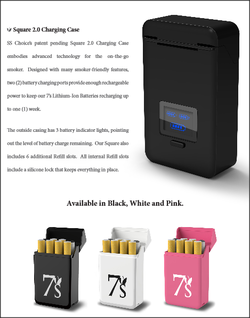
And, “Is an e-cigarette something I can download on the Internet?”
Good questions, all.
E-cigarettes have begun showing up everywhere from convenience stores to grocers. People can be seen using them on train platforms and other places where traditional smoking is prohibited. And in Utah, teenagers are using them to a larger extent than elsewhere in the nation.
| | The Prevention Needs Assessment, a survey conducted every other year, found that 8 percent of Utah high school seniors reported using e-cigarettes in 2013. While admittedly not a high figure, this compares with only 2.8 percent in 2011. In Weber and Morgan counties, a whopping 19.9 percent of students in the 8th through 12th grades use them. What is going on? The simplest answer is that disruptive innovation has hit the tobacco industry. It happened to Kodak when digital cameras came along. It happened to newspapers when the Internet got going. It happened to retailers like Borders when eBook readers hit the market. And it’s happening to big tobacco, which has seen its U.S. market dwindle in recent years and its product become decidedly uncool. But if you’re a keen observer, you will notice that one of those things is not like the others. Cameras, newspapers and books will not kill you unless misused in serious ways. When disruptive innovation hits the cigarette industry, whose business model hinges on addiction, you can bet it’s not because the new product involves smoking vegetables. It will be because it can advertise itself as less bad for you, but with all the thrills. Or, as actress Jenny McCarthy puts it in one of the TV commercials, “You know, I love being single. But here’s what I don’t love: A kiss that tastes like an ashtray. Blech.” Then she proceeds to look really cool with her glowing e-cigarette, sitting next to a hot-looking guy in a hip surrounding. The message is clear: Now you can have all the coolness of cigarette smoking without the bad health effects. Here’s a tip on how to judge these things. Just ask yourself how many times in the past century the cigarette industry has lied to you. What exactly is an e-cigarette? Most of them look like traditional cigarettes, but they use a battery-powered heater to turn a nicotine concoction inside into vapor that looks a lot like smoke but has no offensive odor. As users inhale, the tip of the device glows. I found them on sale at several stores in my neighborhood, ranging in price from roughly $5 to $10, and in a variety of flavors. As with other disruptive innovations, e-cigarettes began with small startup companies. At first, traditional big tobacco tried to ignore them, but now Philip Morris, Lorillard and Reynolds American have jumped on board with their own versions after watching profits disappear. The New England Journal of Medicine published an article that said these devices are threatening to normalize smoking once again, erasing more than 40 years of efforts to stigmatize cigarettes. Which might not be so bad if it involved only current smokers, but our kids are getting addicted to nicotine, and no one really knows what’s in the concoction. The Utah Legislature has noticed. HB112, sponsored by Rep. Paul Ray, a Republican from Davis County, would prohibit the sale of e-cigarettes without a license from the State Tax Commission. The Department of Health would have to develop standards for the products. Supporters of the bill tell me Utah would be the first state to take such action, although cities such as New York and Los Angeles either have banned their sale or prohibited their use in places where smoking is prohibited. But it won’t be enough. Washington needs to get involved. The FDA needs some serious research into the dangers of e-cigarettes, controls should be implemented, and someone back there needs to get them off our television sets. |

 RSS Feed
RSS Feed

